
- Index
- Artist
- Antonio Devity (4)
- Arthur Hierer (2)
- Charles Levier (3)
- Illegible (5)
- Illegible Signature (56)
- Jean Daumier (3)
- Julius Polek (3)
- L. Sihiinzel (4)
- London (4)
- Maren (3)
- Max Ernst (5)
- Reinald Morgen (3)
- Remedios Varo (7)
- See Description (9)
- T.bailey (4)
- Unknown (107)
- Unsigned (7)
- Vasselli (2)
- Yu Liang Jin (3)
- Yu Yin Xin (4)
- Other (862)
- Framing
- Item Length
- Material
- Size
- Unit Of Sale
Large Antique MID Century Modern Abstract Oil Painting Old Vintage Pollock 1959
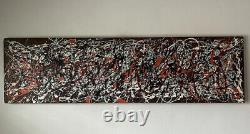
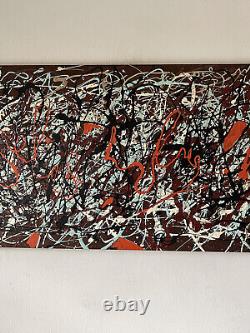
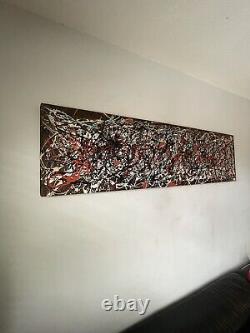
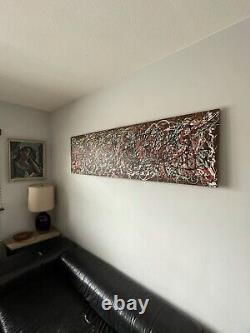
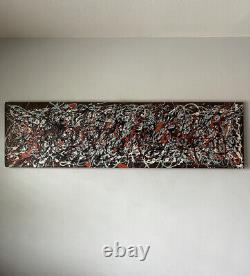
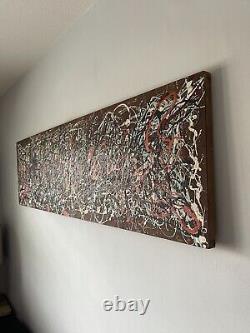
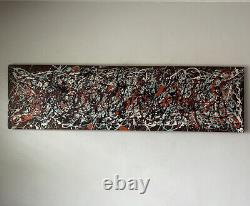
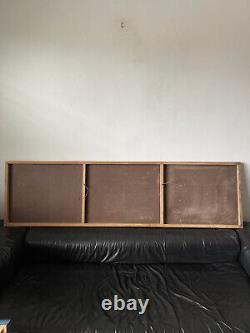
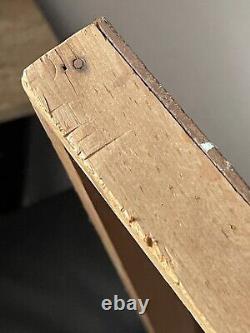
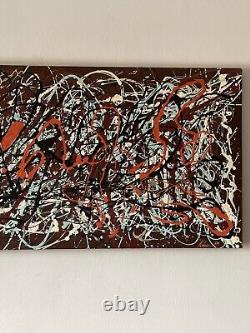
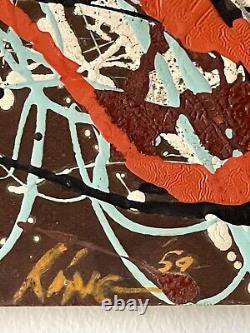


LARGE CAPTIVATING AND OUTSTANDING ANTIQUE MID CENTURY MODERN ABSTRACT EXPRESSIONIST OIL PAINTING ON BOARD IN THE STYLE OF WORLD RENOWNED MODERNIST PAINTER JACKSON POLLOCK. THIS WORK IS SIGNED AND DATED 1959 IN THE LOWER RIGHTHAND CORNER, HOWEVER THE SIGNATURE IS ILLEGIBLE. PERHAPS YOU RECOGNIZE THE ARTIST? WE ACQUIRED THIS PIECE FROM A PRIVATE MID CENTURY MODERN ESTATE IN LOS ANGELES CALIFORNIA. THE DECEASED OWNER WAS A WORLD TRAVELER. THE HOME WAS FILLED WITH EXQUISITE MODERN FURNITURE AND FINE ART. DIMENSIONS: 72" LONG x 20" HIGH. Jackson Pollock (1912 - 1956) was active/lived in New York, Wyoming.
Jackson Pollock is known for Gestural painting, abstract expressionism. Born: 1912 - Cody, Wyoming. Died: 1956 - Southampton, New York. Born in Cody, Wyoming to Scotch-Irish parents, Jackson Pollock was dubbed "Jack the Dripper" (Time magazine 1956) for his revolutionary technique of gestural painting that freed generations of American artists from academic strictures.
He used dissonant, garish colors, and applied paint with energetic circular motions to large canvases so that his work exuded physical energy. It also, according to many art historians, reflected his own turbulent, manic depressive personality.
Pollock was raised in Arizona and California and helped his father in the late 1920s with a surveying job on the north rim of the Grand Canyon. It is thought that his life-long compulsive fear and fascination of vast, open spaces "probably originated at this time".
(Anschutz Collection) During these years, he and his brothers investigated Indian mounds near Phoenix by the home of a family named Minsch where Pollock's mother worked as a housekeeper. From those experiences, Pollock later used occasional Indian symbolism in his paintings. He also had ongoing interest in Southwest Indians and under his bed kept twelve volumes on these subjects of illustrated annual reports from the Smithsonian Institution.After living as a youth in Arizona and not finishing high school, he left to join his brother, Charles Cecil Pollock, at the Art Students League in New York. He never again lived in the West but went through on visits to California. His nostalgia for the West persisted, and he frequently dressed in cowboy garb; some thought his personality traits were akin to those of legendary cowboys--a loner, melancholy, rash, impulsive, quiet, and alcoholic.
He went to the Art Students League with the intention of studying with Thomas Hart Benton, the most celebrated artist of the Depression and later a well-known Regionalist painter from Missouri. Benton took a particular interest in Pollock because Benton preferred friendships with "virile and honest" people from the West and Midwest like himself.
Benton had the greatest influence on Pollack, teaching that the artist's experience with painting was of more importance than the resulting work. Benton promoted theories of rhythmic balance, dynamic sequence, and "muscular action patterns, " all of which Pollock utilized later in his work. Pollock, from his earliest days studying art in California, was also much influenced by techniques of El Greco, Spanish painter, whose rhythmic repetition of forms he adopted. In the summers in the 1930s, Pollock would "hit the highway, " often going through Oklahoma and the Panhandle of Texas, and from these experiences he did prints showing cowboy and farm activity. He also had work as a W.Artist, working in the Mural Division, which required one painting a month for a public building. By the late 1930s, he was seeking professional treatment for alcoholic depression. He did many expressive paintings, which he said were intended to free him of the yoke of Benton's influence and from his mental problems. He also came under the influence of the Mexican muralists David Siqueiros, Jose Orozco, and Diego Rivera, whose extensive use of symbolism Pollock utilized in his large-scale paintings. In the 1940s, his emotional turmoil led him to themes that were mythic and heroic in highly abstract styles including Cubism, Surrealist automatism, Abstract Expressionism, and the biomorphic forms of Joan Miro.
In November, 1943, she gave him a solo exhibition and a contract guaranteeing him one-hundred fifty dollars a month for a year, freeing him from financial straits. She also commissioned him to decorate her apartment. This first Guggenheim exhibition was followed by two others for Pollock. For her, this was the beginning of promoting her "war babies, " unknown American artists whom she thought had promise, and for him, her show of confidence in his work was a great boost to his ego and reputation. Pollock married Lee Krasner, a Russian Jewish artist, with whom he had a crisis-driven relationship but a sharing of interest in mysticism and avant-garde painting.
They lived at East Hampton on Long Island, and the move away from the city seemed by 1946 to have a freeing effect on his painting. Much influenced by her theories and encouragement, he began painting increasingly with drips, smears, and giant circular motions over smaller geometric shapes.
This technique seemed particularly inspired by readying for an exhibit in 1947 arranged by Betty Parsons, who took over Peggy Guggenheim's Gallery. He made a transition to mural size works asserting that easel painting was a dying form. He laid canvases on the floor, where he felt nearer his work, and feeling totally into the work, likened it to Indian sand painting. He applied paint with sticks, trowels, knives, and by dripping paint.He spoke of the painting taking on a life of its own, and a sense of pure harmony with the creation. It set a new standard in American art, especially when Pollock abandoned brushes completely for dripping and pouring paint to avoid the disruption of reloading the paint brush.
He said he had a general notion of what he was about before beginning but that the painting also took on a life of its own. For a period in the late 1940s and early 1950s, he abstained from alcohol and lived quietly on Long Island. However, his success with these works seems to have paralyzed him, and he felt his privacy eroded. Life magazine had a feature on him suggesting that he was the greatest living painter in the United States.They were done scroll-like with thin black paint on huge bolts of unsized duck cloth. He also did scary self portraits, which revealed himself as tense, confused and despairing.
However, by then, he was producing virtually nothing and was drinking constantly. On August 27, 1956, he died in a one-car auto crash, in which one other person, his female passenger was also killed. He had been a turbulent soul, stilled by the alcoholism that so dominated his life. However, his influence on American art is monumental, reinforced by the fact that ARTNews magazine selected him as one of the top twenty-five most important-ever western artists.
According to the article, he shattered pictorial space.

